Experiments in Oil and Cold Wax and Textiles for Melbourne: Our Creative Heart
Lindsay Hussey recounts the joys of collaboration
For me, the most exciting aspect of the City of Melbourne grant project – Melbourne: Our Creative Heart – is the opportunity to collaborate with artists who use different mediums. To see what happens when we combine them!
I’m a textile artist who works with fabric and embroidery. I’m collaborating with Penny Sharples who works in oil and cold wax (O&CW).
O&CW is a painting technique where oil paint is combined with cold wax. The resulting work is rich in texture.
This is also one of the features of my textile art, so we had an immediate synergy.
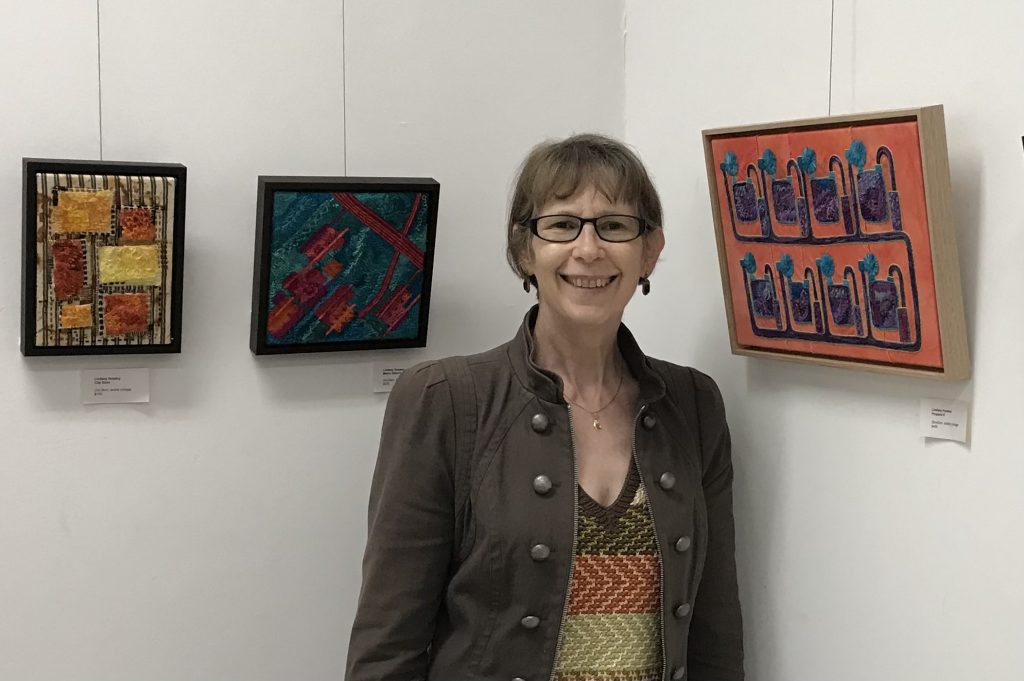

Taking time to play
Penny and I started playing and experimenting with different combinations of our two mediums and made up a number of sample boards.
At our first session, we applied O&CW to various pieces of textile to find out how the textile would take it.
The textiles we used were calico, heavy lace, fabric embroidered with tapestry wool and stranded cotton, heavily machine-embroidered table linen and a light, heavily creased fabric.
We then applied the O&CW with a brayer and squeegee. We also pressed heavy lace into the O&CW to create texture.


Not everything was a great success
As we expected, when we reviewed our samples, they showed mixed results. For example, O&CW on the calico and light fabric created interesting texture, as did the heavy lace pressed into the O&CW.
However, the O&CW on heavy stitching showed very little effect. Neither did the O&CW where its colour was too similar to the fabric colour .
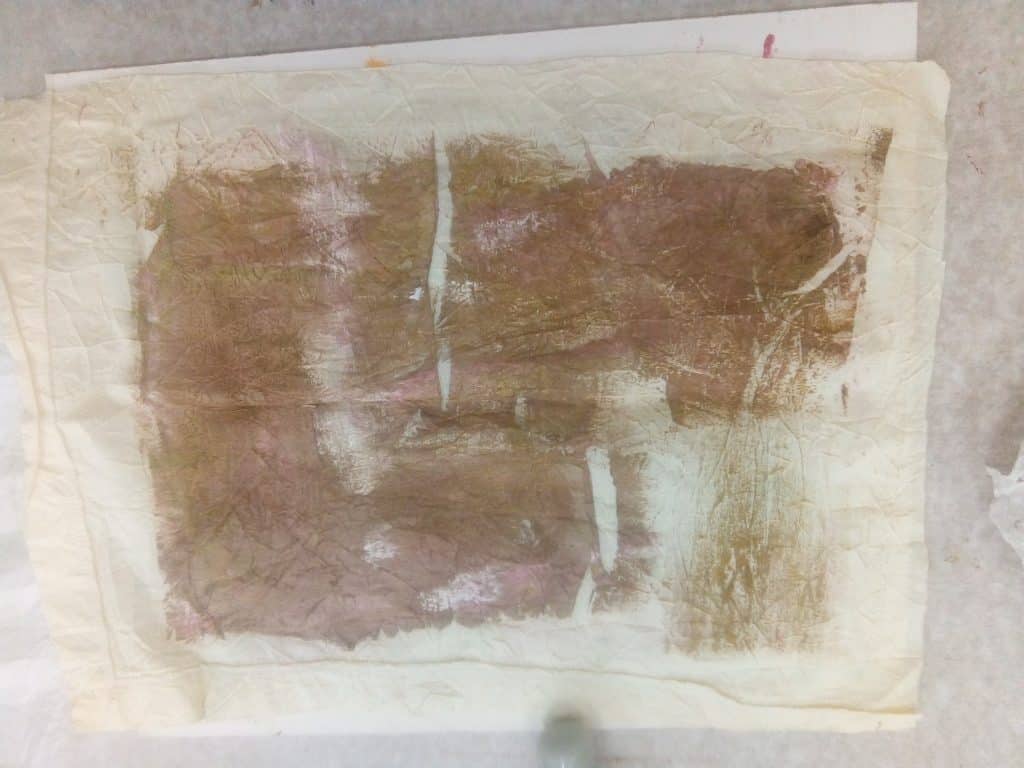
Delights of reduction
For our second session we experimented with reduction techniques. We first built up layers of O&CW in different colours, then used various solvents to remove the top layers to reveal the underneath layers. These experiments were highly successfully.
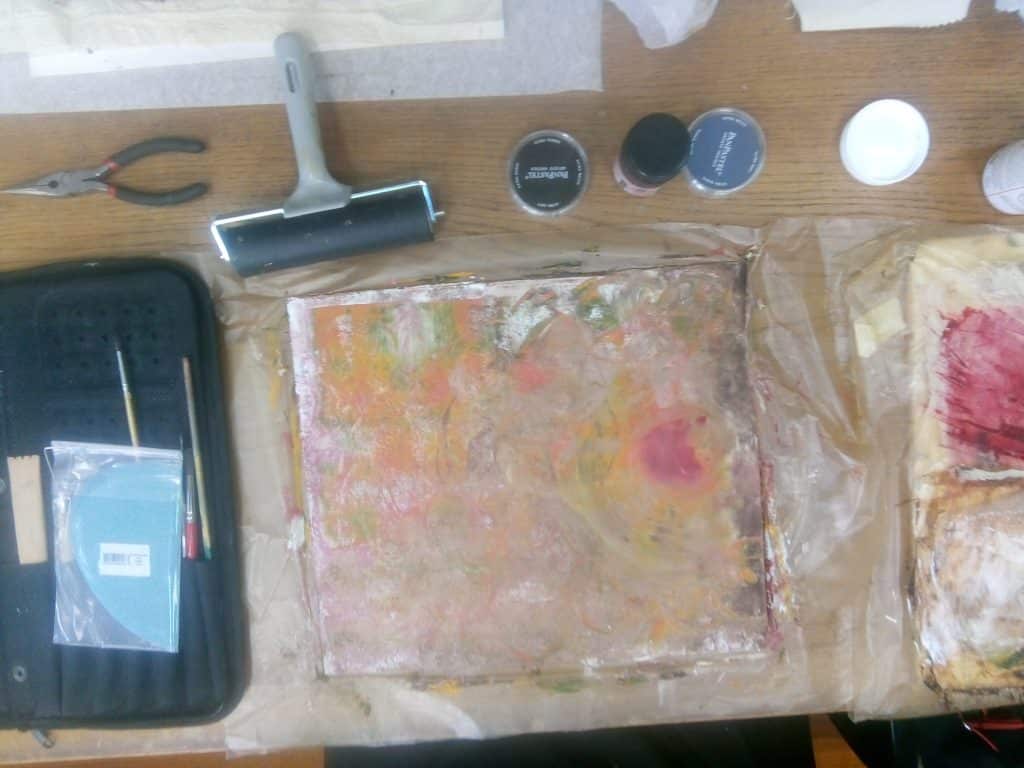
The business of embedding
We also experimented with various methods of embedding muslin and Battenburg lace in the O&CW. This was a fun process and produced very satisfactory results.
Among other findings, we discovered that the wax made the muslin semi-translucent. This allowed the underneath O&CW colour to come through very subtly. We also discovered that a semi-dry O&CW base is best for embedding textiles.
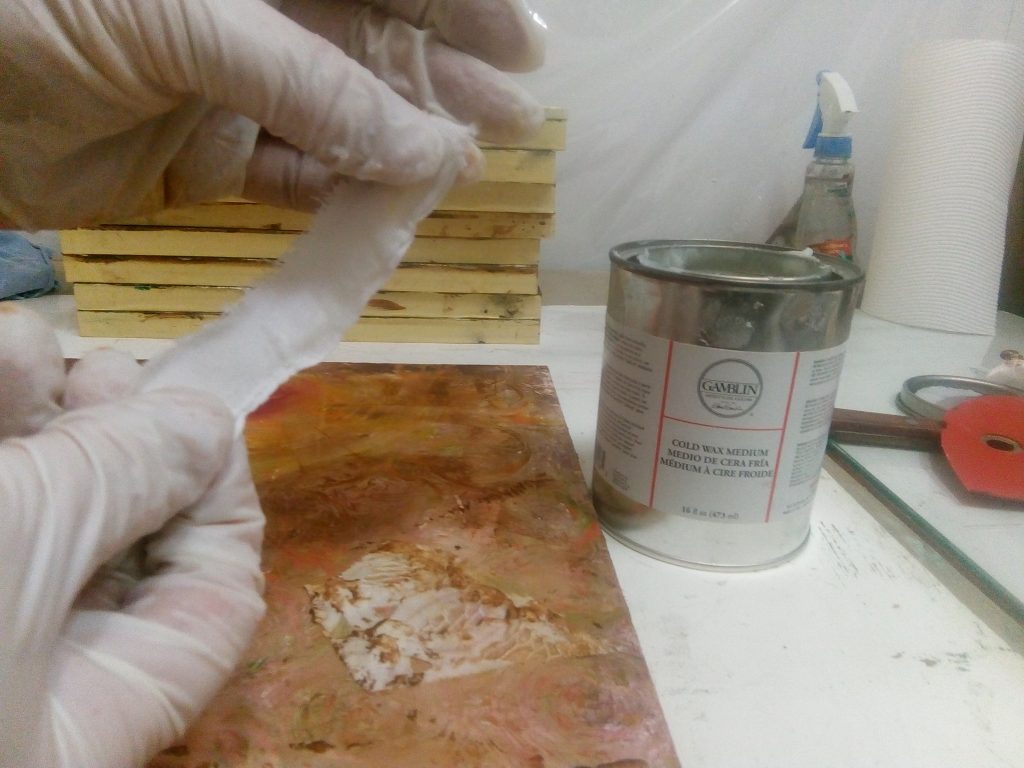
Muslin ready to be embedded 
Embedded Battenburg lace 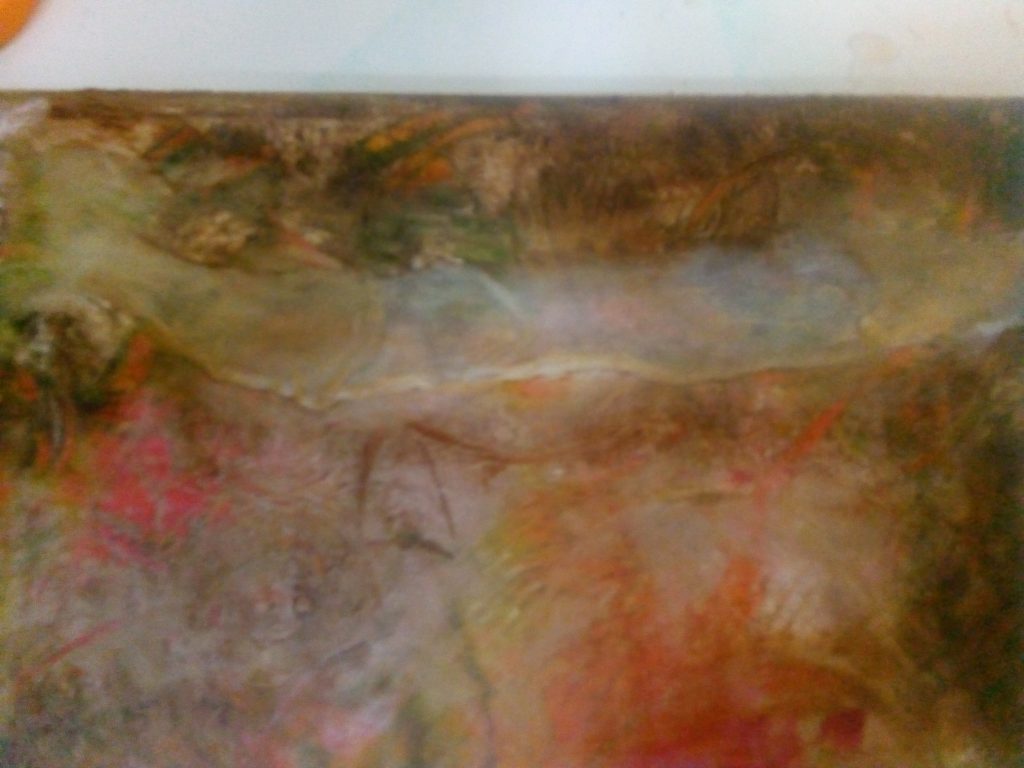
Oil and cold wax colour through muslin
What else can we embed?
In our third session, we continued the trialling of embedding textiles in the O&CW. This time we used linen fabric, three samples of burlap of various thicknesses and two samples of embroidery.
One of our findings was that attaching the burlap to the sample boards with cold wax used too much cold wax. Instead, we attached it with PVA glue and applied the cold wax only on the top. Fortunately, this wasn’t an issue with the embroidery samples, as the PVA would have stained the fabric.

Coffee, anyone?
At this stage of our experiments, we started to develop ideas and experiments for work to be included in our exhibition. Coffee is so much a part of Melbourne’s culture, and we wanted to reference it in our work.
As a first step, we trialled various methods for painting with cold wax and dried coffee grounds. For example, we tried both mixing the grounds in the cold wax and sprinkling the grounds on the cold wax. We were very pleased with the results.

An inspiring way to work
Penny and I have both found our experiments across mediums inspiring. The two of us are bouncing ideas between us, stimulated by seeing what happens when we combine ‘this’ with ‘that’. We are learning from each other and coming up with ideas that we feel would not have arisen working alone.
